On July 11 and 12, 2022, 30 middle and high school teachers participated in a workshop offered by the National Museum of African American History & Culture (NMAAHC) and the Zinn Education Project on teaching Reconstruction.
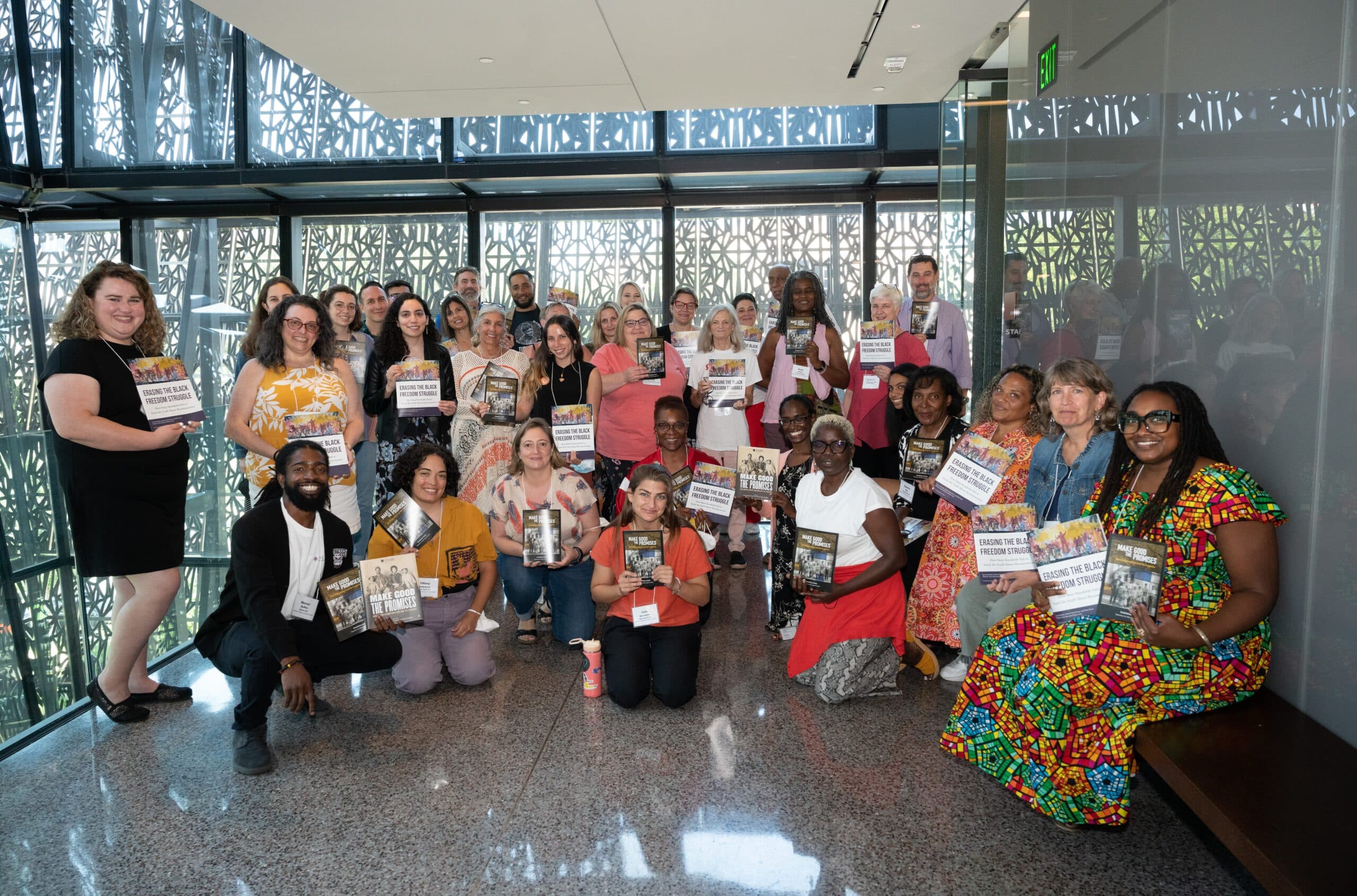
Participants and facilitators at the NMAAHC workshop on Reconstruction on July 11, 2022, holding copies of the Reconstruction report and the Reconstruction exhibit book. Photo credit: NMAAHC/Doug Sanford.
Participants met at NMAAHC to explore the museum’s special exhibit, Make Good the Promises: Reconstruction and Its Legacies, and engage in activities grounded in the Zinn Education Project Teach Reconstruction campaign lessons and new report, Erasing the Black Freedom Struggle: How State Standards Fail to Teach the Truth About Reconstruction.
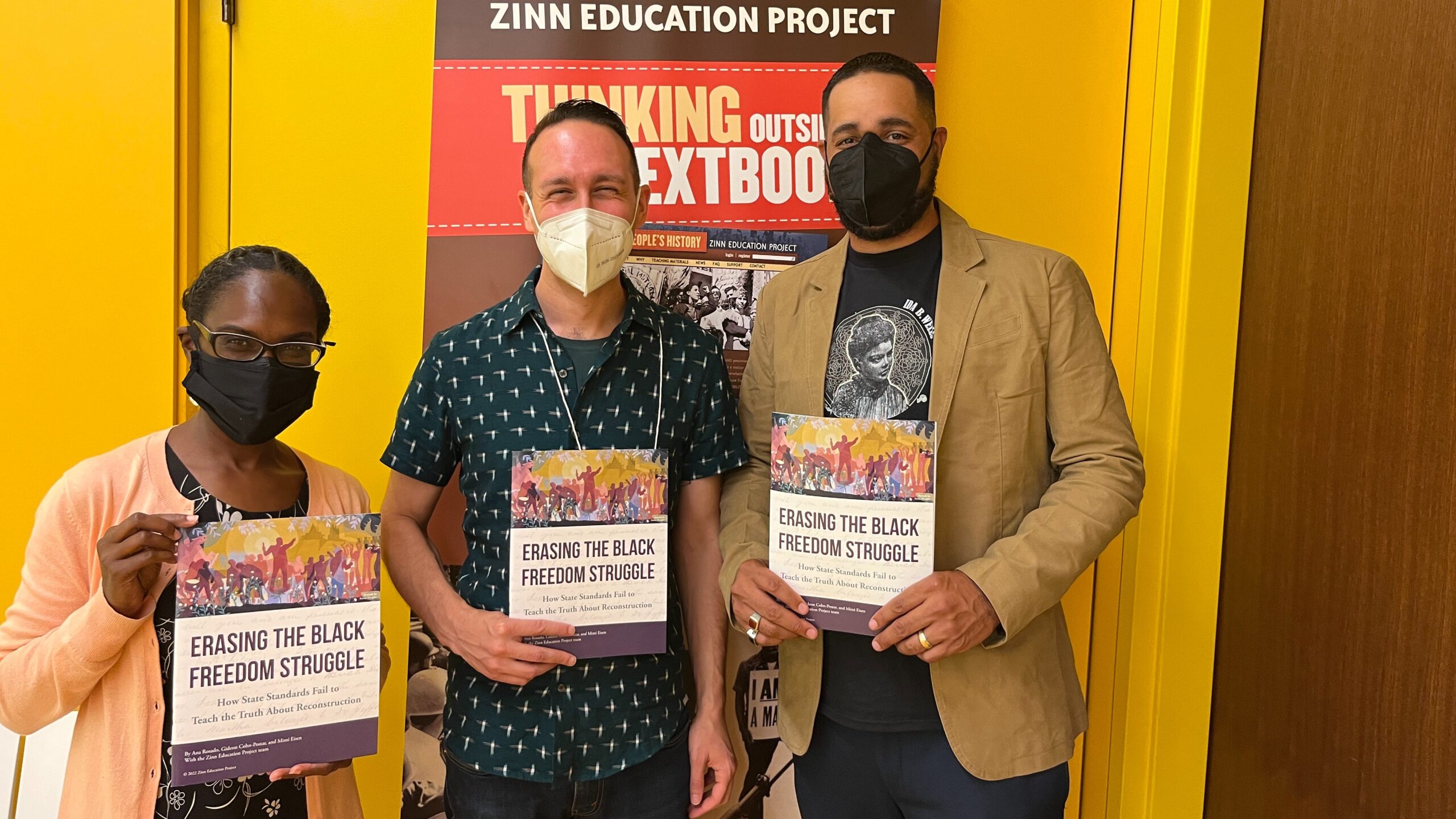
Candra Flanagan, staff lead for the Teaching and Learning unit of the NMAAHC Education Department and co-author of the introduction to Make Good the Promises; Adam Sanchez, high school history teacher and editor of Teaching a People’s History of Abolition and the Civil War; and Jesse Hagopian, Zinn Education Project organizer and co-editor of Teaching for Black Lives.
Educators traveled from Texas, Georgia, South Carolina, New York, New Jersey, Pennsylvania, and the D.C. area to take part in the two-day event.
The group explored many methods and mediums for engaging students in Reconstruction history. They experienced three interactive lessons — Poetry of Defiance, Reconstructing the South, and When the Impossible Suddenly Became Possible; analyzed primary source documents; listened to clips from Dr. Kidada Williams’ podcast, Seizing Freedom; discussed ways to improve K-12 Reconstruction education; reflected on museum exhibits and artifacts; and much more.

Author Michelle Coles (left) with workshop participant in the NMAAHC Sweet Home Café.
Each participant received a copy of the Zinn Education Project report on Reconstruction and two books: the young adult novel Black Was the Ink and the exhibit book, Make Good the Promises. Black Was the Ink author Michelle Coles joined participants for lunch at NMAAHC’s Sweet Home Café and signed copies of her book.
Erasing the Black Freedom Struggle Report
To synthesize everything they had learned, the workshop culminated on day two with an examination of Erasing the Black Freedom Struggle: How State Standards Fail to Teach the Truth About Reconstruction. Participants reviewed key findings from the report, determining if they rang true for their own district and their own practice. They selected one of our recommended standards that they are most excited about addressing in the new school year. In a gallery walk format, they met up with other teachers who selected the same standard to brainstorm strategies and share resource ideas. Then they wrote and posted their own recommendations for improvement in their districts.

Participant recommendations for school districts.
The session closed with participants writing about what actions they will take to give Reconstruction more attention in the curriculum using their sphere of influence. They selected a phrase from their writing and did a read around to create a poetic collective statement.

Atlanta, Georgia high school teacher Mansur Buffins. Photo credit: NMAAHC/Doug Sanford.
Workshop Reflections
Workshop participants appreciated the unique opportunity for professional development in the extraordinary National Museum of African American History and Culture. For many, it was their first time in the museum. They stayed on each day past the workshop to explore the museum until closing. At the end of days one and two, they replied to questions about what they learned and the format. Here are selected responses:
I loved the use of the “write that I” historical poem format in Poetry of Defiance. It is such a creative and empowering way to have students process the history they are learning that focuses on the humanity of the people they’re studying.
From the exhibit, I learned that Reconstruction effected the entire country, including the North where I teach. I learned for the first time that the first African American man to vote after the 15th Amendment was passed did so in New Jersey and that voter suppression in some of its most horrific forms took place in Philadelphia.
Starting with a silent primary source reflection in the gallery was excellent. I loved the back and forth between demonstrating the lessons and talking whole group.
I learned some of the ways in which Reconstruction was the first era of Black Power in U.S. history — how Black Americans were their own change agents, understanding that they were unable to rely on the Federal government or others for their protection and well being.
The lessons today taught me that when teaching this particular time in history, that I should teach from a place of power and accomplishment.
It was a good mix of methods with time to work and think individually, as well as in groups. The room for discussions was good.
Thank you for making this program accessible. I had a phenomenal time and it helped inform my teaching beyond belief.
The workshop deepened my pool of knowledge and created new questions, some answers, and a call to action to continue teaching this information.
I have not taught about Reconstruction yet, but with the resources I’ve acquired at this workshop, I feel empowered to do so.
My greatest overarching lesson was that Reconstruction was not a failure. It was not simply about white terror. Black folks historically and continue to resist in remarkable, impressive ways. Fighting for freedom is unfortunately a long haul.
This has been one of the best workshops I have attended. The presentations, materials, small group work, and passion for the subject has been very moving.
This was “teacher heaven.” Keep up the phenomenal work!
Make Good the Promises Exhibit
In addition to the lessons in the museum classroom, participants were moved, as one person said, “to tears,” by the special exhibit called Make Good the Promises: Reconstruction and Its Legacies. We hope their comments below convince everyone reading this to see the exhibit at NMAAHC in Washington, D.C., before it closes on August 21, 2022.
This is one of, if not the, most powerful exhibits I have seen at any museum I have been to. The fact that it takes Reconstruction beyond 1877 (where textbooks end) is incredibly useful and thought-provoking. The last part of the exhibit that moves into contemporary time is especially powerful. It was also interesting, and hopeful as well as slightly depressing (in that “we still haven’t gotten very far”), to read the notes written by visitors, especially those by kids and teens.
As someone who has taught Reconstruction for many years, it was amazing to see the artifacts of what I have been teaching. For example, seeing marriage certificates and Freedmen’s Bureau records, including applications for land from freedpeople, made these things even more real for me.
It is AMAZING!! So incredibly well done and powerful. I read about but was still not ready for the gut punch when seeing Trayvon Martin’s donated clothes and belongings, as well as the Bree Newsome items. I was also blown away by the conversations I overheard from the public visitors as adults interpreted the exhibit for children they were with. They were exactly the type of conversations I imagined the curators were hoping to initiate!
The Reconstruction exhibit gives legitimacy to the notion that the Reconstruction period never really ended. In the words of Eric Foner, Reconstruction is an “unfinished revolution.” It fills in the gaps in our collective history; most Americans have not had a meaningful education on the topic. The exhibit clearly shows that we all have agency in moving the Revolution along, to fulfill its promises. The exhibit covers a variety of aspects of life for freedpeople and centers the period on their agency in determining what freedom for them would look like.
I really loved the end of the exhibit and the invitation to imagine reconstructing the country. It makes the whole historical era, right down to its name, make so much sense, and it gives all of us a stake in it.
I felt like the exhibit allowed visitors to explore the identities of Reconstruction and beyond through meaningful, intimate ways. I found so many connections between the lessons of the Zinn Education Project and Facing History and Ourselves. . . I was thrilled. Sometimes tears of joy that this exhibit now exists, sometimes tears of experiencing the artifacts. Why is this a temporary exhibit? It should be permanent!!
More Photos
Scroll through the Flickr album below for more photos from the two-day workshop.
More Resources
Descriptions and links for the resources referenced in this post and many more are listed below and on the Teach Reconstruction report website.







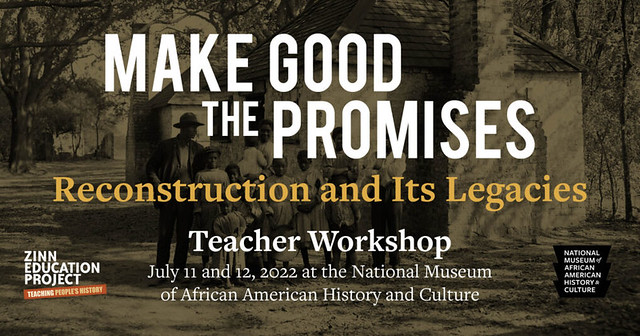
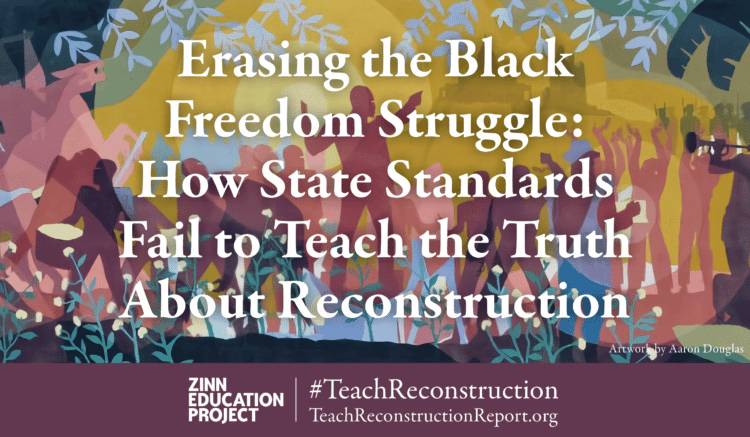
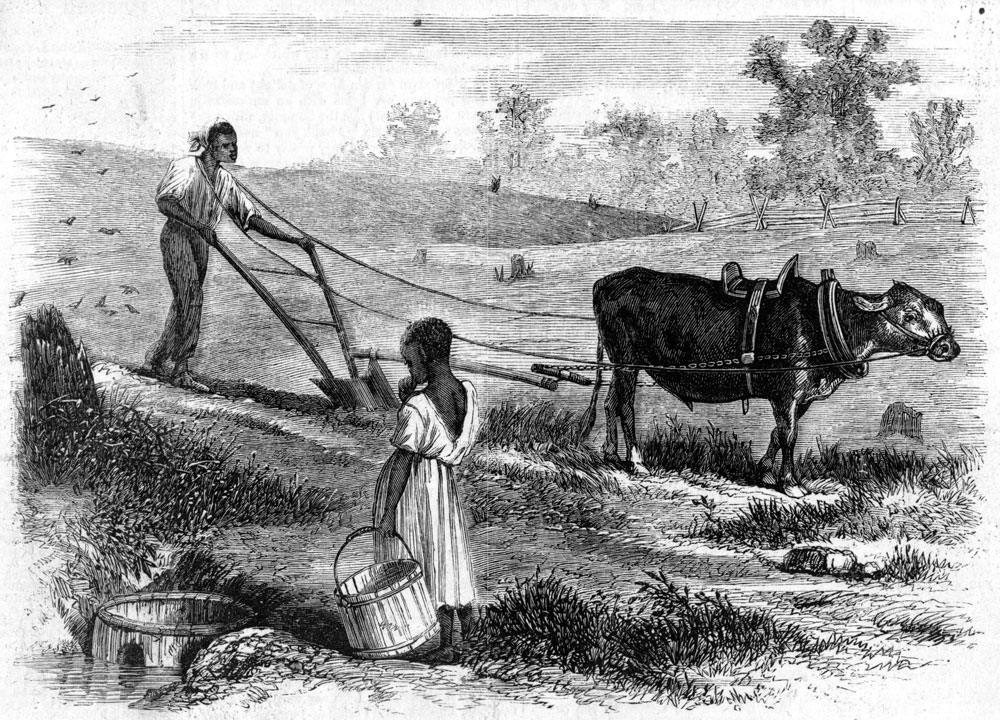
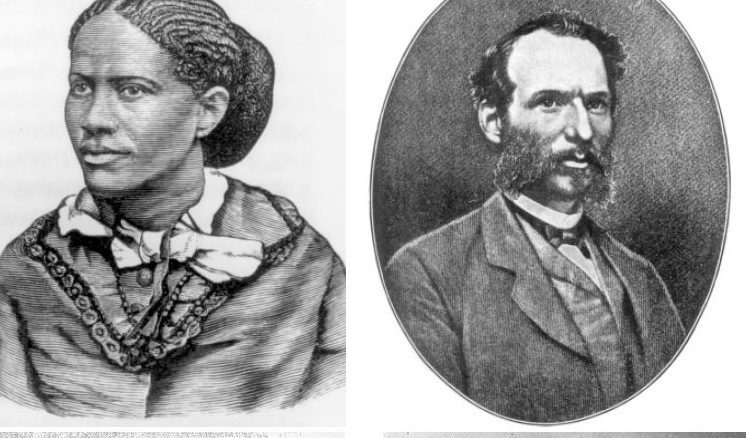
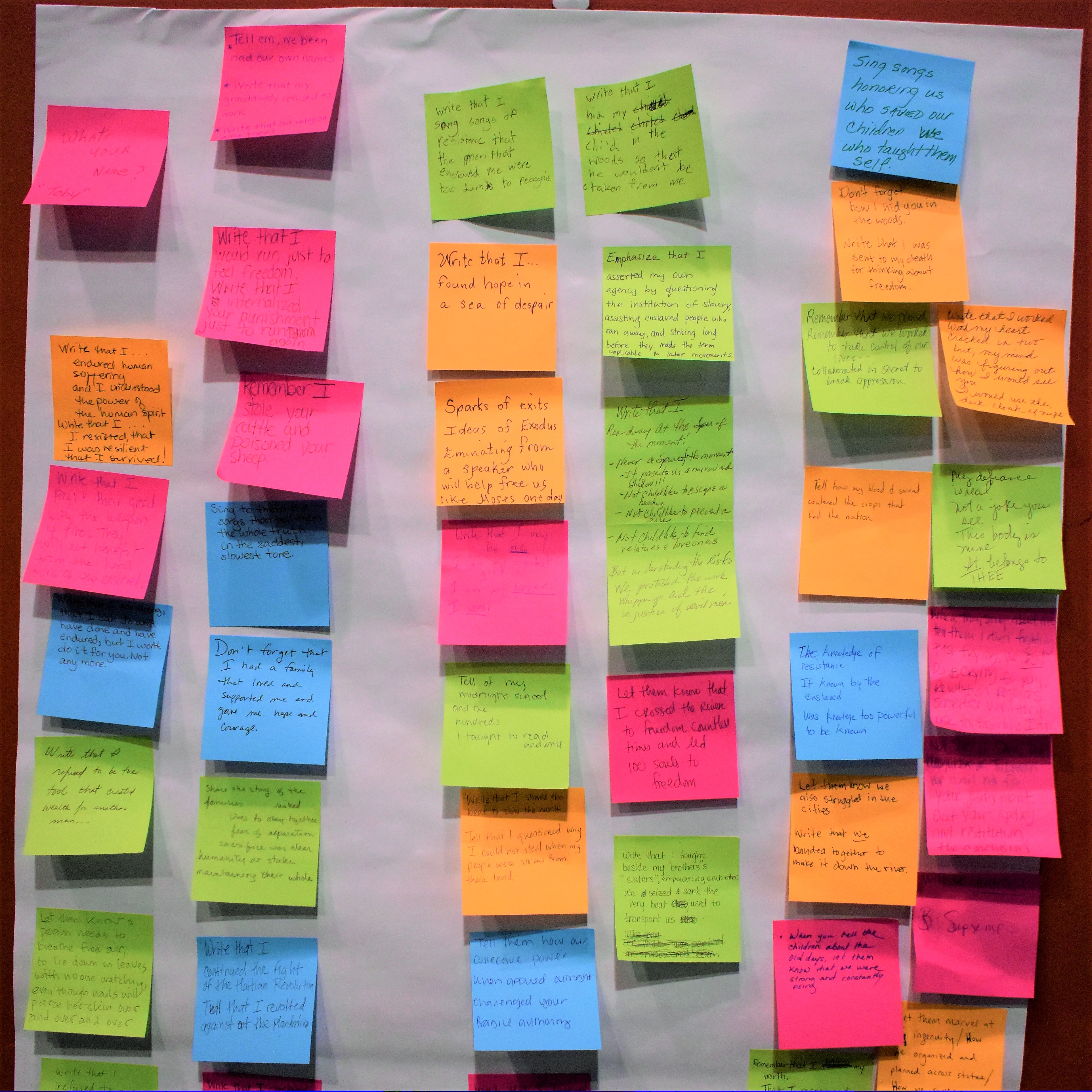
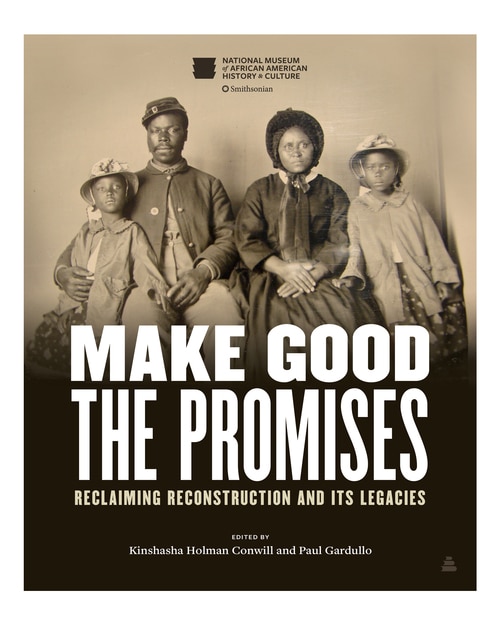
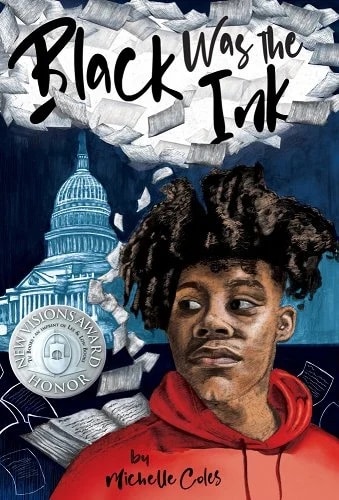
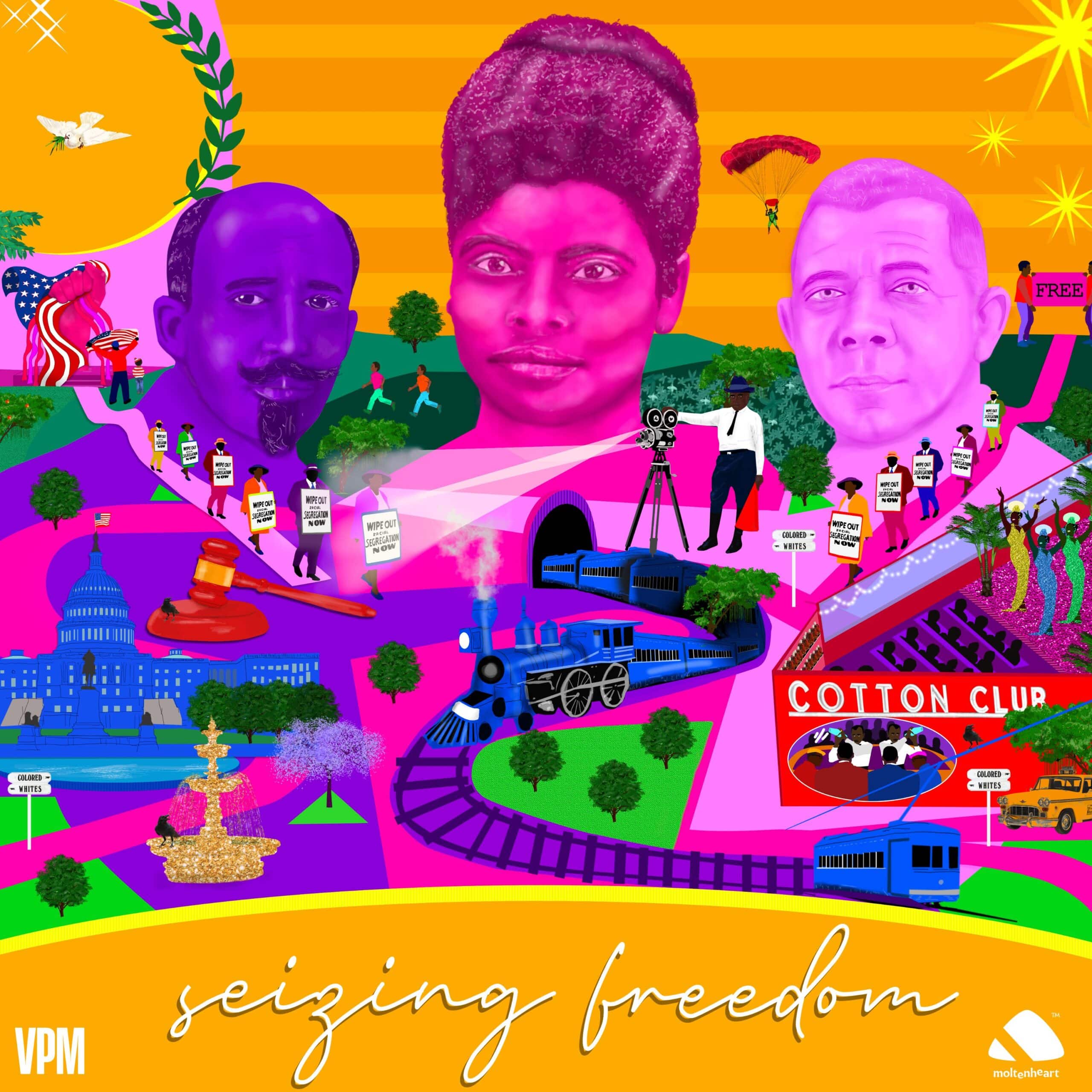





Twitter
Google plus
LinkedIn